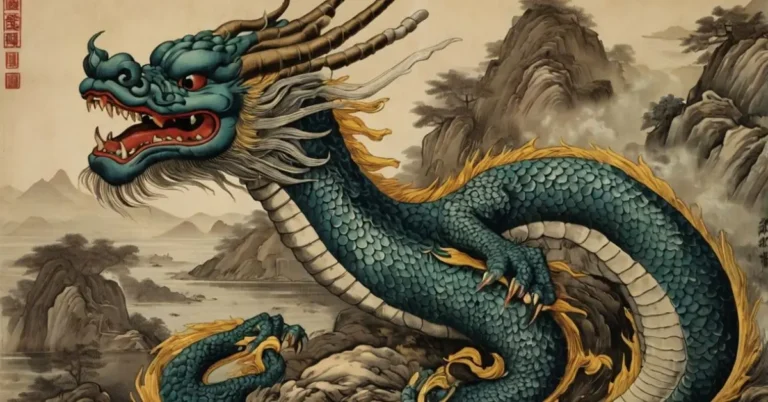The great dragon has captivated human imagination for centuries, symbolizing power, wisdom, and mystery across various cultures. From the benevolent Chinese lóng to the fearsome European fire-breathers, dragons have been integral to folklore, religion, and art. This article explores the multifaceted representations of the great dragon, delving into its origins, symbolism, and enduring legacy.
The Origins of the Great Dragon Myth
The concept of the great dragon likely emerged independently across different civilizations, often inspired by natural phenomena and the discovery of large fossils. In ancient Mesopotamia, the dragon Tiamat represented primordial chaos, defeated by the god Marduk to create the world. Similarly, in Indian mythology, the dragon Vritra was slain by Indra to release the waters of life. These narratives underscore the dragon’s role as a formidable force that must be overcome to restore order.
Eastern Interpretations: The Benevolent Dragon
Chinese Dragon (Lóng)
In Chinese culture, the great dragon, or lóng, is a symbol of auspicious power, associated with strength, prosperity, and good fortune. Unlike Western dragons, the Chinese dragon is often depicted as a wingless, serpentine creature with four legs, embodying yang energy and control over water and weather. Emperors adopted the dragon as a symbol of imperial authority, and it remains a central figure in festivals and art.
Japanese and Korean Dragons
Japanese and Korean dragons share similarities with the Chinese lóng, often portrayed as water deities. In Japan, dragons are associated with rainfall and bodies of water, while in Korea, the yong is a benevolent creature linked to agriculture and prosperity.
Western Depictions: The Malevolent Dragon
In contrast, Western cultures often depict the great dragon as a malevolent beast. European dragons are typically winged, fire-breathing creatures hoarding treasure and terrorizing villages. Legends like that of Saint George slaying the dragon symbolize the triumph of good over evil. These narratives reflect societal fears and the human struggle against chaos.
Dragons in Other Cultures
Mesoamerican Quetzalcoatl
In Mesoamerican mythology, Quetzalcoatl, the feathered serpent, is a deity associated with wind, air, and learning. Unlike the destructive dragons of Europe, Quetzalcoatl is a creator god, emphasizing the diverse roles dragons play in global mythologies.
Norse Jörmungandr
Norse mythology introduces Jörmungandr, the Midgard Serpent, a colossal sea serpent encircling the world. Its existence signifies the boundaries of the known world, and its eventual battle with Thor during Ragnarök represents the cyclical nature of time and existence.
Symbolism and Interpretations
The great dragon embodies various symbolic meanings:
- Power and Authority: In many cultures, dragons symbolize supreme power, often associated with deities or rulers.
- Wisdom and Knowledge: Dragons are guardians of wisdom, representing the pursuit of knowledge and enlightenment.
- Chaos and Destruction: In some traditions, dragons embody chaos, serving as obstacles that heroes must overcome.
- Protection and Benevolence: Eastern dragons often serve as protectors, bringing rain and prosperity.
Comparative Overview
| Region | Dragon Characteristics | Symbolism |
|---|---|---|
| China | Serpentine, wingless, four-legged | Power, prosperity, imperial authority |
| Japan | Water-associated, benevolent | Rainfall, agriculture, protection |
| Europe | Winged, fire-breathing, treasure-hoarding | Chaos, evil, heroism |
| Mesoamerica | Feathered serpent (Quetzalcoatl) | Creation, wisdom, wind |
| Norse | World-encircling sea serpent (Jörmungandr) | Boundaries, cyclical time |
The Great Dragon in Modern Culture
The great dragon continues to inspire modern storytelling, appearing in literature, film, and video games. From Tolkien’s Smaug to the dragons in “Game of Thrones,” these creatures captivate audiences, symbolizing both fear and fascination. In video games like “The Legend of Zelda: Tears of the Kingdom,” dragons serve as powerful allies and adversaries, reflecting their complex roles in mythology.
Conclusion
The great dragon remains a potent symbol across cultures, embodying a spectrum of meanings from chaos to benevolence. Its enduring presence in mythology and modern media underscores humanity’s fascination with these majestic creatures. As we continue to explore and reinterpret the great dragon, it serves as a mirror reflecting our deepest fears, aspirations, and values.
FAQ’s
1. What does the great dragon symbolize in Chinese culture?
In Chinese culture, the great dragon symbolizes power, prosperity, and good fortune, often associated with imperial authority.
2. How do Western and Eastern dragons differ?
Western dragons are typically depicted as malevolent, fire-breathing creatures, while Eastern dragons are benevolent, associated with water and agriculture.
3. Who is Quetzalcoatl in Mesoamerican mythology?
Quetzalcoatl is a feathered serpent deity representing wind, air, and learning, playing a crucial role in creation myths.
4. What role does Jörmungandr play in Norse mythology?
Jörmungandr is a sea serpent encircling the world, whose battle with Thor during Ragnarök signifies the end and rebirth of the world.
5. Why are dragons significant in modern media?
Dragons symbolize various themes like power, wisdom, and chaos, making them versatile characters in storytelling.
6. Are dragons based on real creatures?
While dragons are mythical, their concept may have been inspired by the discovery of large fossils and natural phenomena.

